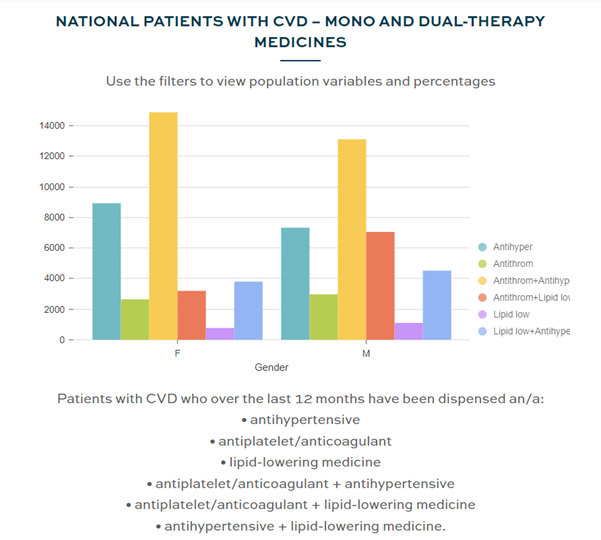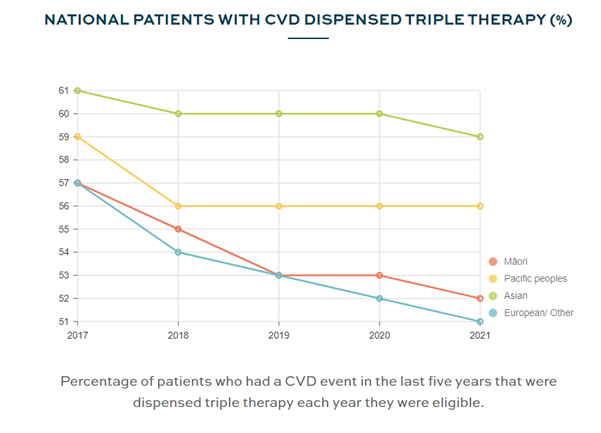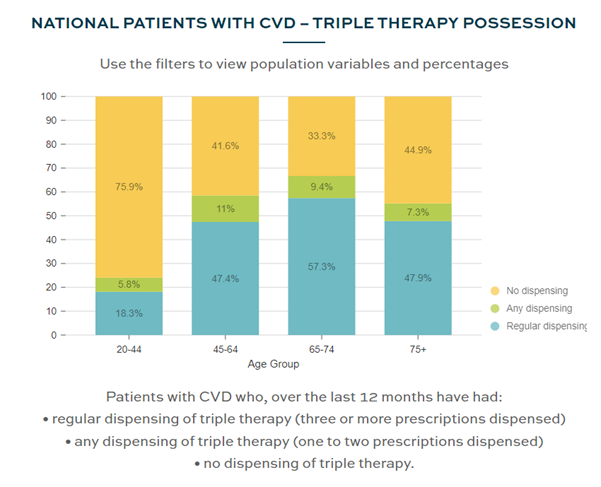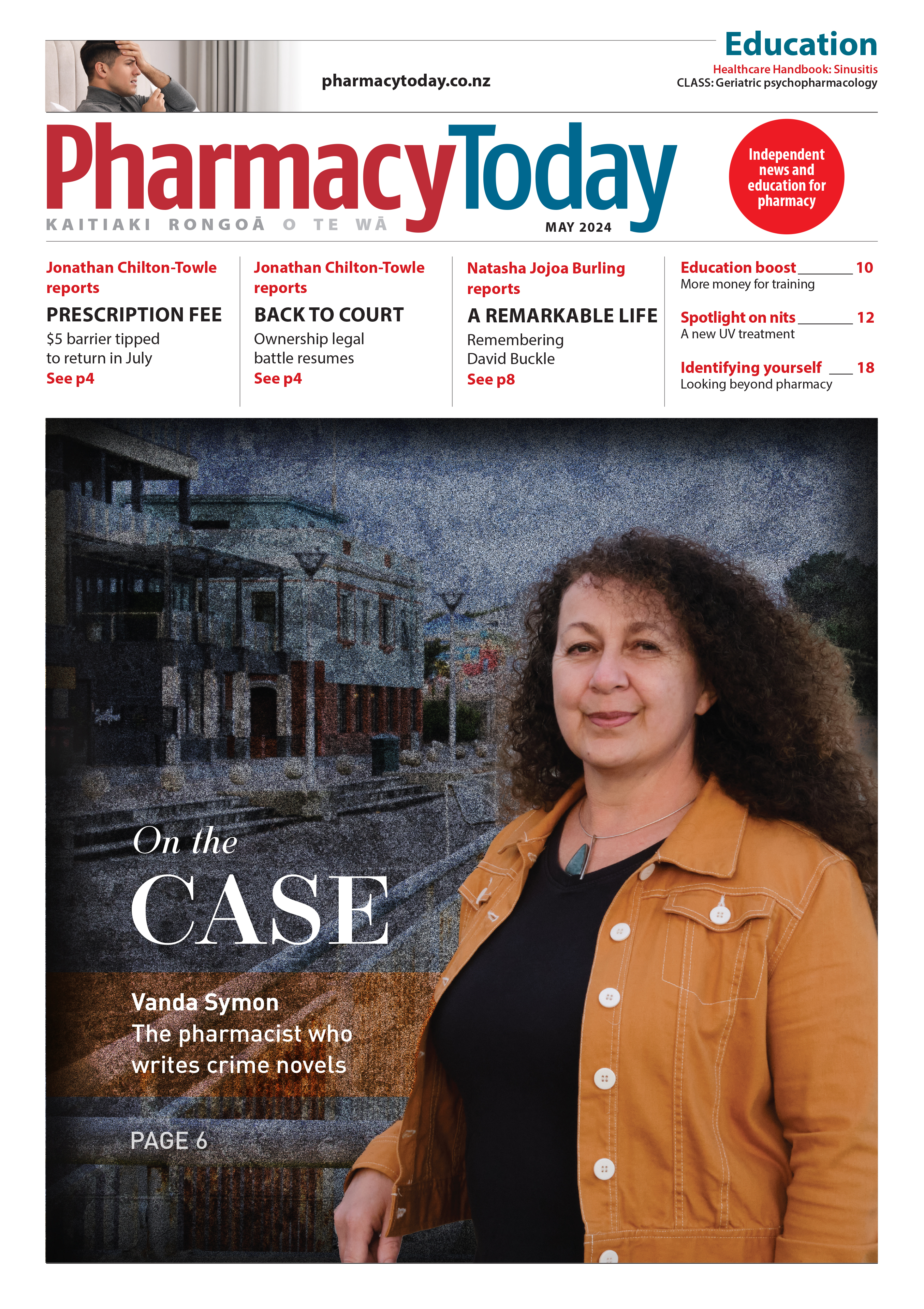This article, written by Sidhesh Phaldessai, provides an overview of geriatric psychopharmacology, including the epidemiology of mental health disorders in the older population, the physiological changes that occur with ageing and their impact on pharmacokinetics and pharmacodynamics, and the use of psychotropic medications in older adults
New CVD prescribing dashboard available now
New CVD prescribing dashboard available now
EPiC Cardiovascular Disease, published by Pharmac-sponsored educators He Ako Hiringa, is now available online and allows exploration of prescribing for secondary prevention of cardiovascular disease. This is an area with significant disparities, and big gains can be made by improving medicine access for these patients. The dashboard allows users to easily see any gaps in their prescribing for patients who have had a CVD event, and provides commentary on best practice.
EPiC CVD enables primary care clinicians to view data at the national, practice and personal prescribing levels. Like other EPiC themes, the data stories in CVD can be filtered by ethnicity, gender, age and deprivation quintile, allowing users to identify groups that may require additional medicines or support with their medicines.
Evidence clearly demonstrates the effectiveness of triple therapy (an antithrombotic and medicines to lower lipids and blood pressure) at preventing secondary cardiovascular events. Despite this, only around half of patients receive triple therapy after a cardiovascular event.
The data show us that:
- Older people are more likely to have had a CVD event in the last 5 years
EPiC CVD starts by looking at the prevalence of patients who have had a cardiovascular event in the last five years. The age filter shows the largest variation between groups nationally, with 14.4 per cent of patients aged 75 and older having experienced a cardiovascular event in the last five years compared with only 0.3 per cent of those aged 20–40.
- Rates of triple therapy dispensing have declined for Māori and European/Other patients since 2017
In 2017, 57 per cent of Māori and European/Other patients who had experienced a CVD event in that year were dispensed triple therapy. By 2021, this had declined to 52 per cent of Māori patients and 51 per cent of European/Other patients.
- Regular dispensing of triple therapy is less common for younger people and women following a CVD event
The triple therapy possession theme also highlights age and gender disparities. After a CVD event, women and patients aged 20–44 are less likely to be dispensed regular triple therapy (≥3 prescriptions in a year) compared with men and patients aged 45 and older. This is concerning when you consider that triple therapy, in conjunction with smoking cessation, may prevent or postpone up to 80 per cent of recurrent events.
The most commonly missing medicine from the triple therapy regimen is a lipid-lowering medicine. The EPiC CVD mono and dual therapy data helps users identify which medicine their patients may be missing by viewing the number of patients on just one or two of the triple therapy medicines.
Again, differences in dispensing are seen for younger people and women. Of all people with CVD, women are less likely to be dispensed lipid-lowering medicines than men. Younger patients are also less likely to be dispensed secondary preventive medicine than older people. This further exacerbates disparities for Māori, who are more likely to experience CVD at a younger age.
Accessing EPiC
Prescriber, practice, and national data can be viewed at epic.akohiringa.co.nz Prescribers are required to create a free EPiC account to see their report.
A demonstration version of the dashboard, showing the prescriber and practice view is available at epic-demo.akohiringa.co.nz
Data to 31 March 2022 are currently showing in EPiC and updates occur quarterly.
EPiC is produced by Matui Limited. Our staff are available for an EPiC walk-through or to provide more charts and illustrations.
Declaration of interest: The Health Media is a 50% shareholder in Matui Limited, the publishers of He Ako Hiringa.








